
You unlock this door with the key of imagination. Beyond it is another dimension: a dimension of sound; a dimension of sight; a dimension of mind. You’re moving into a land of both shadow and substance, of things and ideas; you’ve just crossed over into… The Twilight Zone.
It seemed unthinkable... When insiders first reported that the Hollywood Tower Hotel at Disney California Adventure would soon see its last elevators ascend into the Twilight Zone, it felt like a total impossibility. In a park themed to the Golden Age of California, the Twilight Zone Tower of Terror was a star in its own right: a new classic, tailor-made for the 21st century park and an integral element of the park’s $1.5 billion rebirth.
With our Lost Legends series, we’ve created a library of in-depth stories behind closed classics from around the world. We set course for 20,000 Leagues Under the Sea, watched the fall of Walt’s Tomorrowland from the Peoplemover, met Dreamfinder and Figment on a Journey into Imagination, took to the skies to go Soarin' Over California, launched to the stars on Disneyland Paris' Space Mountain: De la Terre à la Lune, braved a vengeful goddess aboard TOMB RAIDER: The Ride, explored the ride that changed Disney Parks forever – Star Tours – and so many more. Today, we half-heartedly induct another stunning E-Ticket into our archive of in-depth stories behind heartbreaking closures. And this one is a doozy.
Image: Disney
Submitted for your approval: the curious case of The Twilight Zone Tower of Terror, a headlining attraction borrowing from a Walt Disney World original. Equal parts subtle, thrilling, eerie, and brilliant, it served as an achor to a reborn park and a fan favorite. Only Disney's greatest minds could've concieved it, and barely a decade after its opening, their Tower has toppled. You think you know the story, but there's so much before "Hollywood, 1939..."
In this in-depth feature, we’ll explore how Imagineers decided on and developed a drop ride, what chilling mysteries awaited within the haunted Hollywood Tower Hotel, what made California’s Tower so essential to the park’s narrative and rebirth, and what took the place of this storytelling marvel. It’s a tale so unbelievable with such an unimaginable twist ending, it can only be a story told from the outer reaches of... The Twilight Zone.
History in Freefall
As is usually the case with our Lost Legends entries, the story begins long before the Tower of Terror carried its first passengers into another dimension. The idea of incorporating a freefall drop ride into a Disney park is as old as the technology that could’ve made it happen.
Demon Drop at Cedar Point, an Intamin First Generation Freefall.
Image: Corey Balazowich, Flickr (license)
In 1982, Six Flags Magic Mountain California opened Freefall, a first generation Intamin Freefall tower. The mechanics behind the ride were cutting edge. Four guests would strap into a cart that slowly advanced backward into the base of a steel tower. The cart would then be lifted up to the height of the tower and gently pushed forward, precariously perched high above the park.
Aligned perfectly with the outside of the tower, the cart would release and careen down the vertical drop, sliding out at the bottom of the curved track so riders would end up on their backs, reversing backwards to the loading area. Truly, the process has to be seen to be believed.
Image: Six Flags
The mechanics might seem rudimentary or even barbaric by today's standards, but the cutting edge technology caught the world by storm. Guests queued for hours to experience the 20-second ride at Magic Mountain, and the ride was quickly duplicated at thrill parks across the world. In the mid-1980s, Disney was poised to incorporate this brand new experience into their parks, as well.
Discovery Mountain
Both EPCOT Center and Tokyo Disneyland opened within six months of each other (in October 1982 and April 1983, respectively), right about the same time that Six Flags’ Freefall debuted. With two massive projects under their belts, Imagineers got to work creating new concepts that would eventually appear at the company’s next two parks: the Disney-MGM Studios (1989) and Disneyland Paris (1992). And the wild success and spread of Intamin’s drop ride made it a candidate for both.
Image: Disney
To hear Disney historian Jim Hill tell it, Imagineers at once got to work developing ideas for how to incorporate this simple, off-the-shelf thrill ride into Disney Parks in their usual, story-centered way. Luckily, they had an opening. Disneyland Paris was going to be different from anything Disney had done before – each and every land and attraction would be redesigned from a European point of view, infused with new stories and details.
This new, romantic, literary park wouldn’t have a cold, sterile, silver and white Tomorrowland. It wouldn’t have a Tomorrowland at all. Instead, it would have Discoveryland. This gold and brass seaport of bubbling lagoons, submarines, zephyrs, and rocks bursting from the ground was based on a never-built land originally planned for Disneyland in California. (We chronicled the in-depth story of this unbuilt steampunk paradise in its own feature, Possibilityland: Discovery Bay.) Forget a scientific future; this new Discoveryland was the future as envisioned by the past... a fantasy future.
Image: Disney
In this organic world, a stark white, Space Age Space Mountain wouldn’t do, so instead Discoveryland would feature Discovery Mountain, a brass peak of cogs and rivets. Sure, Discovery Mountain would feature a roller coaster through the stars (though here it would be a launched coaster based on Jules Verne’s novel From the Earth to the Moon), but that would only be one part of a massive indoor complex – a land within the land. Discovery Mountain would be Captain Nemo’s secret lair, with the Nautilus docked beneath a craggily volcanic peak in a glowing lagoon.
(Those interested can learn much more about this never-built wonder and the one-of-a-kind Space Mountain it produced in Lost Legends: Space Mountain – De la Terre à la Lune.)
Image: Disney
And there, in the center of this massive indoor environment would stand an Intamin first generation Freefall ride. Themed to Verne’s Journey to the Center of the Earth, the ride would hoist guests sky-high, up and out of Discovery Mountain (see if you can spot it in the Discoveryland concept art at the top of this section) and then send them plunging down toward an open lava vent, with bursts of steam and fire signaling the drop. Of course, at the last second, the elevator would swing out and splash through a waterfall.
The smart concept disguised the bare steel of Intamin’s ride within the steampunk industrial environment of the mountain.
Image: Disney
Of course, in retrospect, we can be glad Disney didn’t move forward with this drop tower – after all, most of the once-widespread installations of this first-generation ride have since been replaced with more modern variations, and the few that do remain feel downright rickety in comparison. But the idea stuck, and Disney Imagineers doubled down on their insistence that a drop ride could belong at a Disney Park.
Meanwhile, development continued at the other new park Disney had planned...
The Disney-MGM Studios Theme Park
We’ve talked in a few of our Lost Legends entries about Michael Eisner – a controversial figure whose legacy is a mix of transformative success and debilitating defeat. However, we’ve always insisted that early on in his time with Disney, Eisner was exactly was Disney needed – a fresh visionary with his finger on the pulse of entertainment (coming directly off a stint as CEO of Paramount Pictures) willing to take big chances to grow Disney’s films, animation, and parks.
Eisner and famed Imagineer Marty Sklar at first imagined leveraging their new cinematic vision into a filmmaking pavilion at EPCOT Center, but the idea soon evolved into its own park: Disney-MGM Studios, Walt Disney World’s third gate. Allegedly designed intentionally to take only a half-day to explore, Disney-MGM Studios opened as Disney’s smallest park by far. Look at the map above and you’ll see that even much of the park we know today wasn’t open to guests. While it had its share of entertainment offerings and a single ride (the Great Movie Ride), its real purpose was to host the Backlot Studio Tram Tour.
(To be clear, the idea of a multi-hour, tram-lead studio tour was “borrowed” from the historic tour at Universal Studios Hollywood. Universal planned to duplicate their famed Studio experience in Orlando, and Disney’s rushed construction of their own tour was literally meant as a preemptive strike to keep Universal out. Insiders still stay that Eisner was unfairly aware of Universal’s plans because of his time at Paramount, making Disney’s fast-tracked studio park a cheat. In any case, Disney’s tram tour forced Universal to re-think its Orlando plans, axing a studio tour in favor of standalone rides for Jaws, King Kong, Earthquake, and more… ultimately a win.)
Disney historian Jim Hill notes that, from its opening, exit polls showed that guests liked the Studio park, but said it needed more things to do – more rides.
Horror Stories
Disney Imagineers began to toy with expanding the Studios. A fast-tracked version of Disneyland’s Star Tours was already under construction and would open before the end of the park’s first calendar year. A logical way to analyze a movie-themed park is by genre. Disney-MGM Studios included action adventure, sci-fi, animation, silver screen classics… one genre was no where to be found: horror.
Image: Disney
The reason was simple: Disney doesn’t do horror. Sure, we chronicled the partnership between Eisner and George Lucas that led to a Lost Legend: the original Star Tours, and how that growing relationship would later lead to Disney’s scariest attraction ever and another Lost Legend: The ExtraTERRORestrial Alien Encounter. But that would be years in the future. Long before Disney would think about using 20th Century Fox’s Alien, they were on the hunt for horror properties to bring to the Disney-MGM Studios. You name it, they looked into it: Friday the 13th, Night of the Living Dead, Texas Chainsaw Massacre, Nightmare on Elm Street. Even, reportedly, a ride to bring all of Stephen King’s horror tales together.
Ultimately, it must’ve been decided that these grisly horror features were too intense for a Disney Park – even a more mature movie-themed one – and Imagineers went back to the drawing board. If no real horror movies would work, maybe they could create their own? Maybe even a horror-comedy?
Image: 20th Century Fox
It was at this point that Disney contacted Mel Brooks (brilliant creator of the go-to horror-comedy, 1974's Young Frankenstein, as well as The Producers, Spaceballs, and Robin Hood: Men in Tights). Like George Lucas, Eisner had carved out a professional relationship with Brooks, and this seemed just the right time to use it.
With Mel, Imagineers created early plans for a dark ride through a haunted Hollywood hotel that was apparently being called Hotel Mel. In line with the Studios’ overarching story, we would’ve been led to believe that we were on a hot set for a movie being shot inside of an abandoned hotel.
Image: Disney
The dark ride, then, would’ve taken guests behind the scenes to see classic movie monsters at work. Problem is, Imagineers couldn’t get the tone of the ride quite right. Was this hotel really haunted? Where the monsters real, or actors? Were we seeing behind-the-scenes of moviemaking, or were we part of the movie?
Point is, Hotel Mel just couldn’t seem to come together in a satisfying way. Not to mention, it didn’t really satisfy Eisner’s decree that Disney Parks should become hip, thrilling places that teens would want to visit.
But as Imagineers regrettably left Hotel Mel behind, the idea began to coalesce with that lingering need for a drop ride. Could Disney designers create a triple threat: a thrill ride, horror ride, drop ride? This is where the story gets good. Read on...
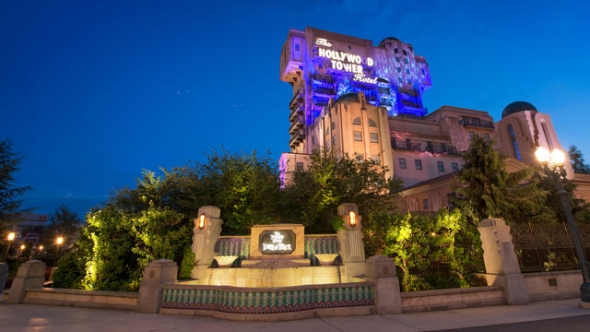
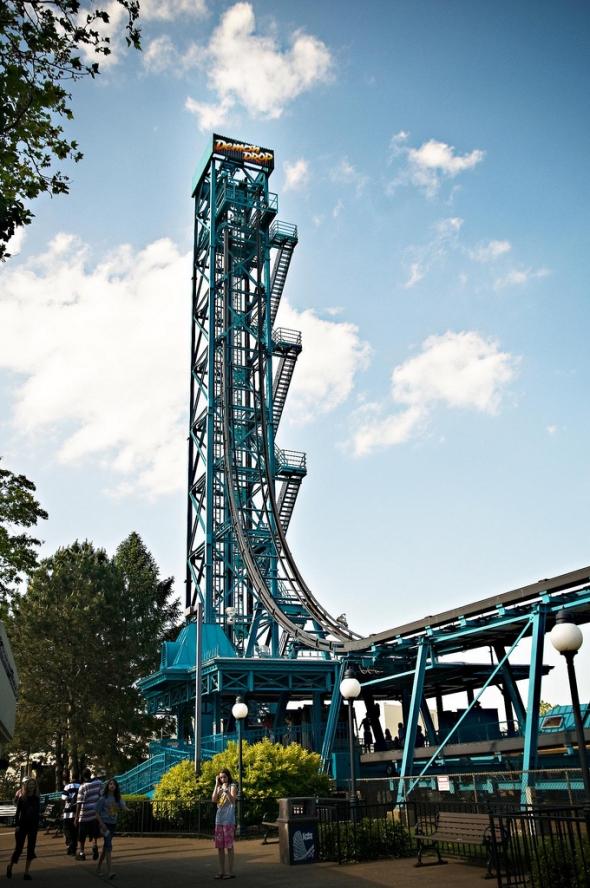
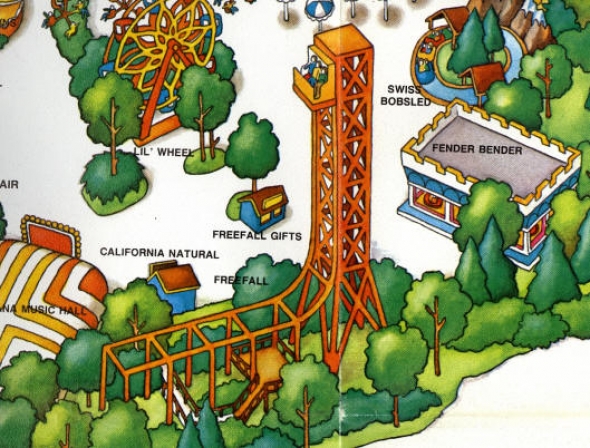
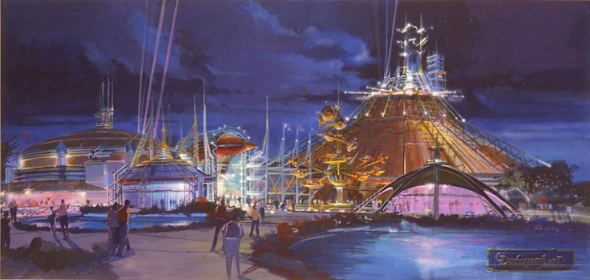
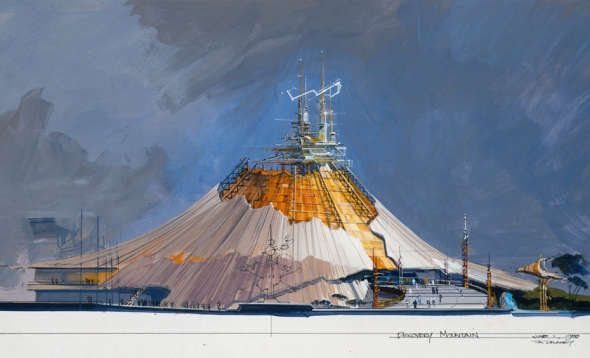
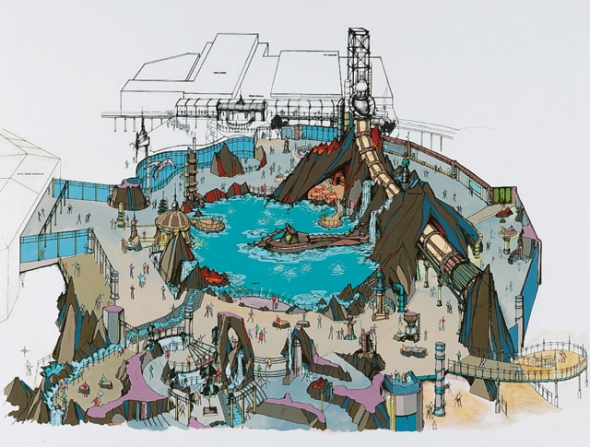
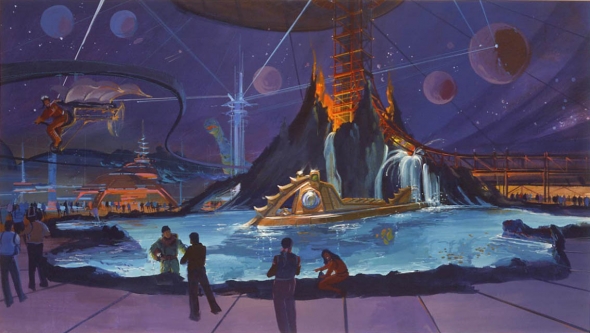
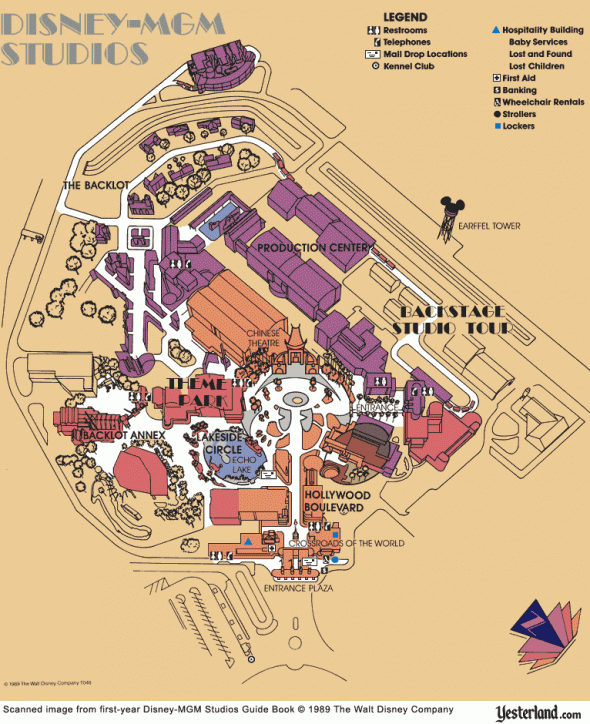
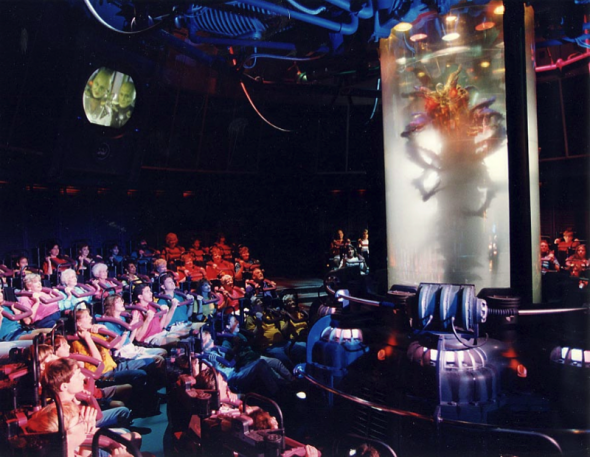
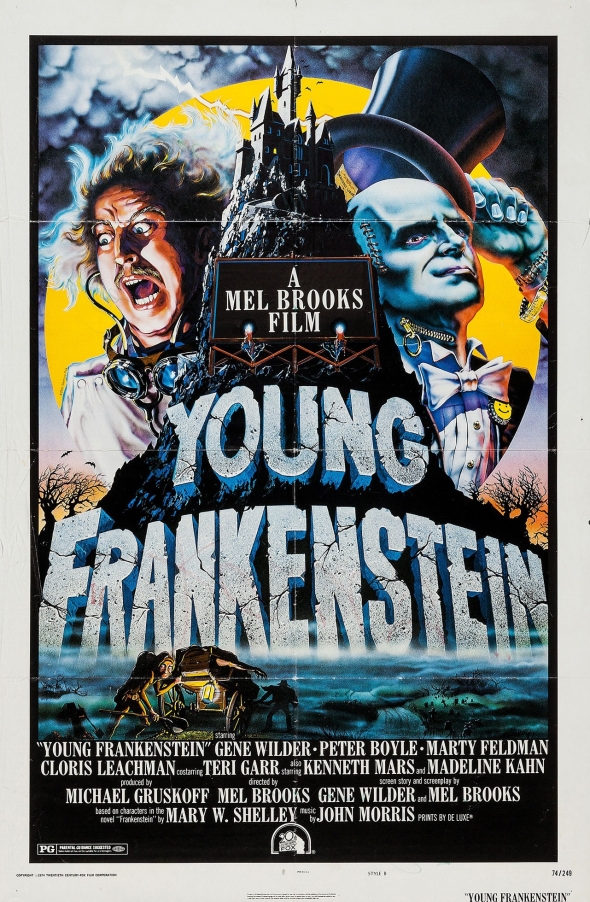
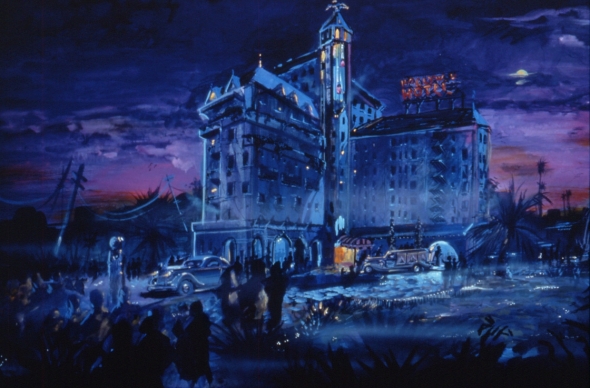

Comments
I was with you until you said, "People feel a deeper connection to Disney's rides than to Universal's, and – admittedly – expect more from Disney."
Wrong wrong wrong. I have a deeper connection with Universal's rides way more than the old, tired, boring "classics" at WDW.
I know this might be a controversial opinion,but I honestly think that Mission Breakout is better than Californiaś TOT. To me the California Tower, while good, always felt like a lesser version of the Florida Tower. Sort of like how the Florida Pirates of the Caribbean compares to the California Pirates of the Caribbean. But the addition of randomized drops, an awesome soundtrack, an extremely diverse and lovable cast of characters,a fun and brilliant story, and some amazing special effects makes Mission Breakout IMO the best ride ever to be featured in California Adventure. It especially boggles my mind that this ride is so hated by the Disney fanbase when the queue line contains a multitude of references to Disneylandś past, including TOT!
On a somewhat related note, I kinda get a little mad whenever people question the staying power of the Marvel characters. I feel that most Disney fans have forgotten that the Marvel Universe wasn´t created along with the MCU, but has been around since the 1960s. Many of its characters have been household names and staples of American popular culture for decades. I mean, the Spider-Man ride at Universal is very much a product of the late 90s, yet it still has long lines and still receives praise as one of the greatest theme park attractions of all time.So if that does not prove that Mission Breakout could potentially last for a long time, then I don´t know what will.
I would like to conclude this rant by reminding everyone that Uncle Walt was not above cashing in on recent movie hits. Disneyś Peter Pan had only debuted 2 years before the opening of Disneyland, yet had itś own attraction there on Opening Day. Alice in Wonderland had 2 of its own attractions despite that film not even being a decade old yet, and the Swiss Family Robinson even got its own Disneyland attraction 2 years after the filmś release. Heck, even Disneyś first film, Snow White, was less than 20 years old when Disneyland first opened and could thus arguably be considered a ¨recent¨ hit at the time. Walt had no way of knowing at the time if these movies would stand the test of time. And while Snow White, Peter Pan, and Alice in Wonderland are still remembered by most people, I doubt anyone remembers Swiss Family Robinson. So though we may not like to admit it, cashing in on recent blockbuster hits has been an integral part of the Disney Park DNA since the very beginning. So for those of you who don´t like having Frozen in EPCOT, Avatar in Animal Kingdom, or GOTG in California Adventure, don´t blame Eisner or Iger. Blame Walt.
This is a few years too late but this has to be the best article written about Tower and I hate to see the continued effects of this. Tower's change to Guardians ended up paving the way for the destruction of California Adventure, seeing it returning to the irreverent jokes and modern music of DCA 1.0. The constant influx of modern money making IPs being forced into and shoehorned into the parks is destroying the historical innovation of Disney and mirroring Universal. The recent (as of this comment) fight with Bob Iger and the comments on IPs shows a rising and terrifying issue that was evident to few earlier with Maelstrom and Tower, but now is becoming blantent.
100% agree with you on the "Guardians of the Galaxy" makeover. CA now has it's own "Journey Into YOUR Imagination," albeit one whose visual pollution can be seen throughout the park. Let's hope it's more temporary than Disney lets on.
As for Ellen's Energy Adventure: as long as they've hobbled the original theming of Future world, the space available (between EEA and the criminally underused Wonders of Life pavilion) would be sufficient to duplicate Shanghai's TRON coaster in full, rather than a truncated version rumored for Tomorrowland. Then put the "Inside Out" attraction in Imagination.
Good info. Lucky me I found your website by chance
(stumbleupon). I have book-marked it for later!